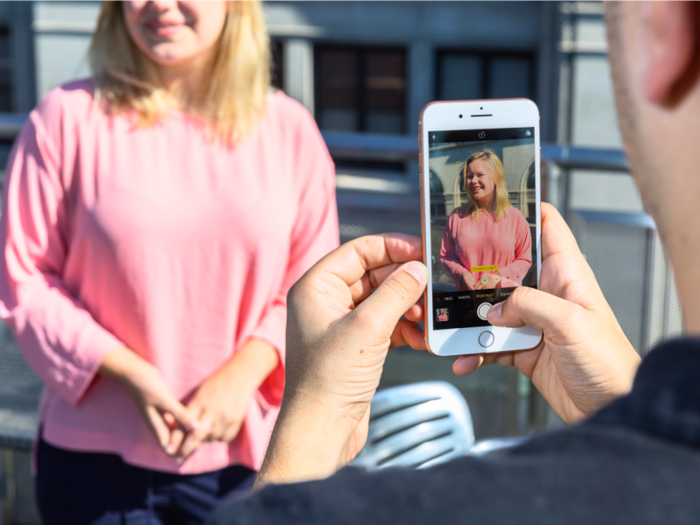
While these aren't hard and fast rules, Google recommends trying these things to make your photos better:
- Make sure the subject is in the foreground. Portrait mode works better when there's nothing obstructing the subject of your photo. If there are other things in the way, the camera will keep everything in front in focus and add blur to a smaller portion of the photo.
- Use the rule of thirds. This is a classic photography tip, and it holds true with smartphone photography too. Rather than placing your subject squarely in the center of the frame, add a grid overlay to your camera and put the subject where two of those lines intersect.
Google has plenty more tips for taking great portrait mode photos on its blog, so head over there to learn more.

Portrait mode works best when you keep a little bit of distance between yourself and the subject — in fact, it's advised that you don't get closer than 19 inches.
But you also shouldn't be too far away. If you're too far from your subject, you'll likely end up with a pretty regular-look photo rather than a nice background blur. And since portrait mode doesn't allow for zoom, you'll need to physically step closer to your subject (which is what you should do in most situations anyway).
My colleague Steve Kovach nailed it with the above photo of his cat, Larry. Notice that he appears to be about a foot away from Larry, which keeps Larry in focus and blurs the rest of the kitchen.

This tip applies to selfies and photos taken with the rear camera.
In the photo above, I'm standing a little bit away from the wall and the phone booth. It's hard to tell that from the original, non-blurred photo on the left, but it's clear from the photo on the right that there was some distance there. That's how the background was able to blur so nicely.
Portrait mode works best when the camera and the phone's software can easily differentiate between the foreground and the background. When those two things are too close together, or too similar, portrait mode doesn't work as well.
In my experience using portrait mode, it's best to have the subject stand about 1-2 feet away from the background.

If your subject isn't sharp, it defeats the whole purpose of portrait mode.
To make sure it's in focus, tap on the screen where you want the photo to be its sharpest.
With phones that have a "live" version of portrait mode like the iPhone 8 Plus and the iPhone X — instead of one that's created by software, like the Pixel 2 — you'll be able to see where the camera is focused in real-time.

In most cases, portrait mode refuses to work at all in low light, so you may not have a choice here. But either way, look for well-lit situations to test out the feature.
As you can see in my colleague Melia Robinson's photo, having bright, natural light made it a breeze to take a nice portrait mode photo. Even though Melia's face is in shadow, the camera easily blurred out the background because there was so much light to work with. The resulting photo is crisp and bright without any noise, or graininess.
 I spent $2,000 for 7 nights in a 179-square-foot room on one of the world's largest cruise ships. Take a look inside my cabin.
I spent $2,000 for 7 nights in a 179-square-foot room on one of the world's largest cruise ships. Take a look inside my cabin. Saudi Arabia wants China to help fund its struggling $500 billion Neom megaproject. Investors may not be too excited.
Saudi Arabia wants China to help fund its struggling $500 billion Neom megaproject. Investors may not be too excited. Colon cancer rates are rising in young people. If you have two symptoms you should get a colonoscopy, a GI oncologist says.
Colon cancer rates are rising in young people. If you have two symptoms you should get a colonoscopy, a GI oncologist says. Audi to hike vehicle prices by up to 2% from June
Audi to hike vehicle prices by up to 2% from June
 Kotak Mahindra Bank shares tank 13%; mcap erodes by ₹37,721 crore post RBI action
Kotak Mahindra Bank shares tank 13%; mcap erodes by ₹37,721 crore post RBI action
 Rupee falls 6 paise to 83.39 against US dollar in early trade
Rupee falls 6 paise to 83.39 against US dollar in early trade

Copyright © 2024. Times Internet Limited. All rights reserved.For reprint rights. Times Syndication Service.